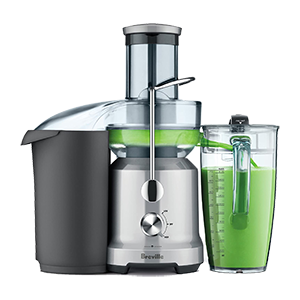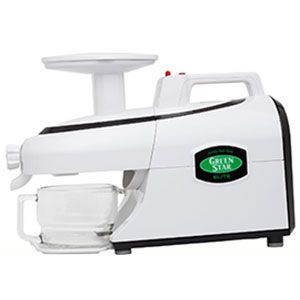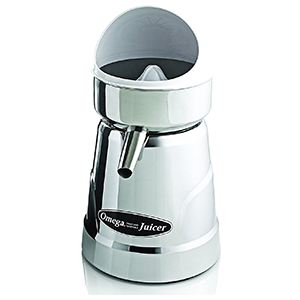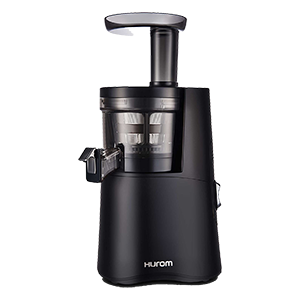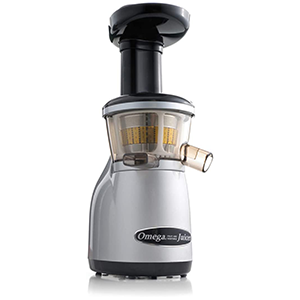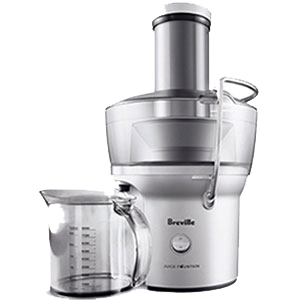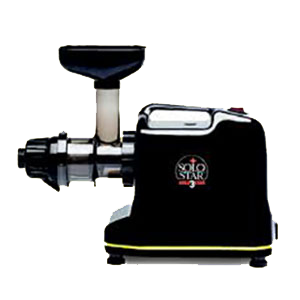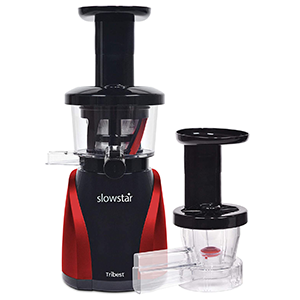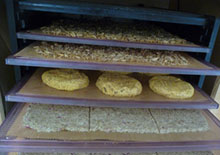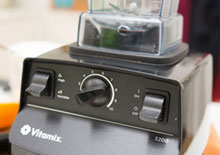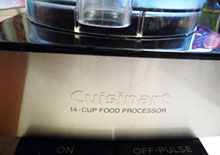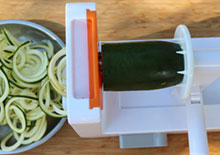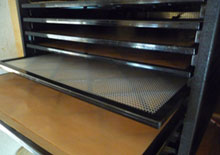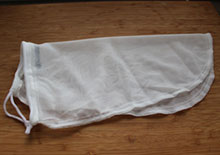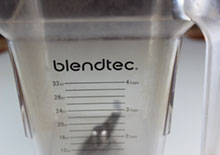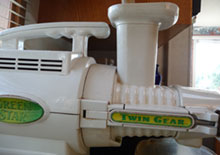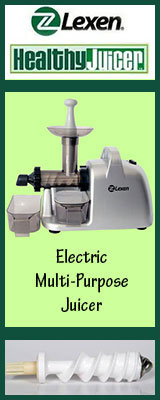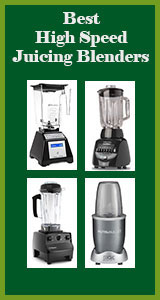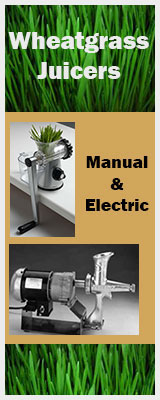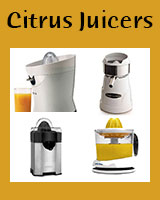- Home
- Kitchen Tools
- Types of Juicers
Types of Juicers and How They Work
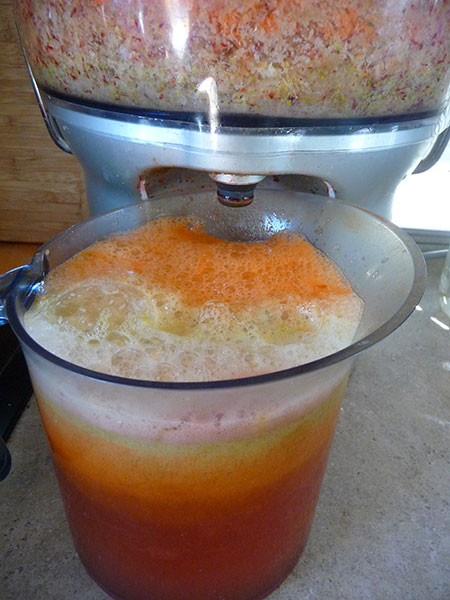
There are basically three different types of juicers for super juicing vegetables and fruits. For those of you looking to buy a new electronic juicer or replace your old one, you might want to consider these options when choosing the best and most appropriate juicer that fits your needs and lifestyle.
The varieties range in price, so budget is the first thing to think about before making your purchase.
Of course, for those of you unable to spend money on a juicer at this time, there is another alternative for juicing your produce that requires minimal to no cost.
We will discuss how to do this below. After all, you should not be left out of the benefits that juicing can provide just because you can't afford a juicer.
Whether juicing for weight loss or just doing a simple one day juice fast you can make your way around owning an actual juicing machine.
This page, however, is primarily dedicated to all of you searching for that perfect juicer. We hope that the information and recommendations we provide will help to ease your decision making process.
All juicers are not created equal, but they do fall into three basic categories depending on the method of extraction, the RPM speed of the juicer and how the appliance separates the juice from the pulp.
Three Types of Juicers
1) Masticating - single auger slow speed juicers
2) Centrifugal - high speed juicers
3) Triturating - twin gear slow speed juicers
1) Masticating Type of Juicer
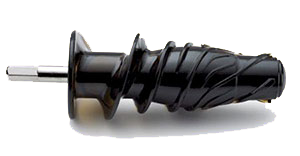
Masticating juice machines have single augers that operate at slower speeds compared to other juicer models. Typically, they rotate at about 80-100 rpm, a much lower "revolution per minute." These juicers break up fruit and vegetable fibers by "chewing" them.
The single augers can run horizontal for a longer machine or vertical to take up less counter space.
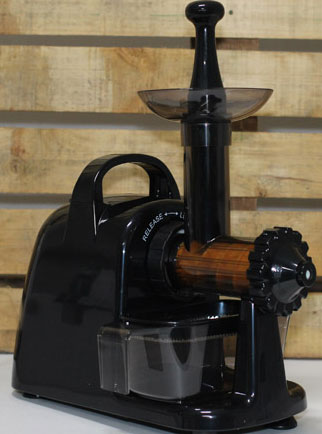
There is often more fiber content in the juices with this method of extraction, but this varies from model to model.
These types of juicers can juice those harder to juice leafy greens and wheatgrass blades fairly well, especially when compared to centrifugal juicers.
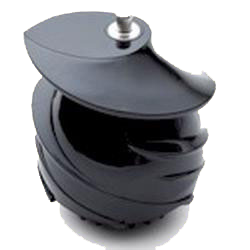
Some single auger types also allow you to make frozen fruit ice
creams, nut butters and pastas.
They can, however, be a little more time consuming because of the slow rotation speed and the time it takes to actually chop up all your juicing ingredients into small size pieces that you must push through the narrow juicing shoot.
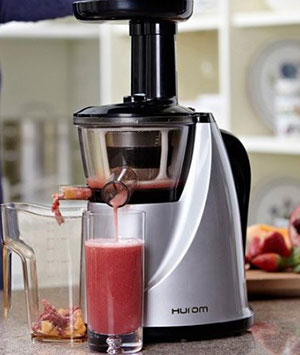
In addition, these machines tend to be harder to clean with more removable parts to soak or scrub.
The Champion Juicer is one of the original masticating single augers and is the one we actually started with over 20 years ago. Today there are many upgrades on this model.
Another benefit to masticating slow rotating juicers is that they don't tend to oxidize as fast as centrifugal high speed rotating juicers. Some say oxidation can decrease the amount of nutrients in your juicing liquid.
On average
most masticating juicers tend to extract more juice out of the plant and
veggie material and do not heat it up because of their low rpm speed.
Some juicers are now both a combination of a masticating and centrifugal juicer, like the Omega Vert and the Hurom Slow Juicer (ironically).
Masticating Juicers - Single Auger Brand List:
- Omega Vert HD Juicer
- Omega 8003 Juicer
- Hurom Vertical Slow Juicer
- Hurom HH Series Premium Slow Juicer
- Kuvings Silent Juicer, Black Pearl NS-900 - non-ejection
- Samson Model GB9001
- Tribest Fruitstar Upright Juicer
- Tribest Slowstar Slow Juicer & Mincer Model
- Lexen Healthy Electric Juicer
- Champion Juicer Household Juicer
- Solo Star III Juicer
2) Centrifugal Type of Juicer
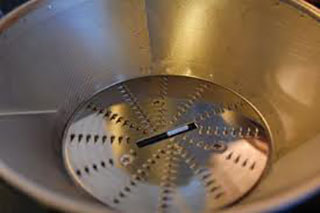
Centrifugal juicing appliances are the opposite of masticating types in that they spin, usually via a sharp toothed basket, at very high rpm's (between 6500 rpm to 13,000 rpm).
These are by far the most popular juicers used by the average person because they are FAST, taking just seconds to grind through your produce and strain out the liquid.
These types of juicers tend to oxidize and expose more air flow into your juice which can break down the nutritional value and sometimes make a duller looking juice that creates a lot of foam.
For those in a hurry, these are the best juicers available because you don't have to chop up your fruits and veggies and you do still get a good amount of nutrition.
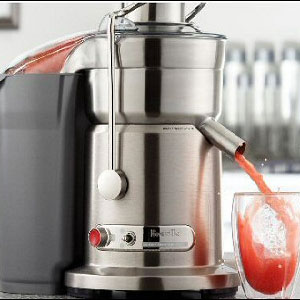
These types of juicers allow you to throw in whole cucumbers, carrots, greens or beets. The shoots are much wider, usually about 3 inches in diameter, so any piece of produce this size can be dropped in no problem.
They are not the best for extracting the maximum amount of liquid, however, because the material is being pushed through at very fast speeds, leaving a somewhat wet pulp fiber as a result.
You can use them to juice your leafy green vegetables but they are not as good at breaking down the plant fibers as masticating or triturating juicing machines. It is helpful, when using centrifugal appliances, to roll up your leaves and place them in with other hard juicy vegetables or fruits.
Often times, because of the higher rpm, they may not even break down your greens completely leaving whole pieces of kale or spinach in your pulp fiber. This is especially true for the cheaper models.
Centrifugal Juicers Brand List:
- Breville Juice Fountain Plus
- Breville Juice Fountain Elite
- Breville Juice Fountain Compact - non-ejection
- Omega Vert HD VRT350 Juicer
- Omega 4000 Juicer
- Omega 9000 Juicer - non-ejection
- Omega Mega Mouth - non-ejection
3) Triturating Type of Juicer
This happens to be one of our favorite types of juicers on the market. It is called a triturating juicer, which means it is designed with 2 interlocking augers or twin gears that lay side by side crushing and pressing the fiber and completely wringing out as much juice as possible. This provides a higher quality juice with more enzymes, vitamins and minerals.
These varieties turn at a much slower rpm and, like the masticating juicers, can take a little longer to press your veggies through.
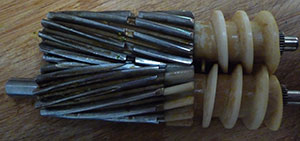
Our favorite juicer out of all the juicers is the Green Star Juicer, which is a twin gear triturator. It is similar to masticating juicers in that it also enables one to homogenize nuts for nut butters or make frozen fruit ice creams. To do this you simply remove the juicing screen plate and replace it with the solid plate.
These juicers
also have magnetic and bio-ceramic technology that slows down the
oxidation process, which is good if you want to make and store your
juice.
Triturating types of juicers are also more versitile at juicing
almost anything and are particularly great for leafy greens and
exceptional for juicing wheatgrass, hence the name "Green" Star.
You will most often get the maximum amount of juice from triturating juicers than the centrifugal or masticating types of juicers.
Triturating Juicers - Twin Gear Juicer Brand List:
- Green Star 1000 Juice
- Green Star GS-3000 Juicer by Tribest
- Green Star GS-2000 Juicer
- Green Star Elite Juicer - pulp ejection
- SAMSON (Kempo Juicer) ULTRA Juicer
Top 4 Best Juicers to Buy
These are our favorite juicers that we have personally owned and used or know other trusted friends who highly recommend them.
- Tribest Green Star Juicer
- Omega 8005 Juicer or Omega Vert
- Hurom Slow Juicer
- Breville Juice Fountain Plus or Elite
Types of Juicers with Pulp Ejection
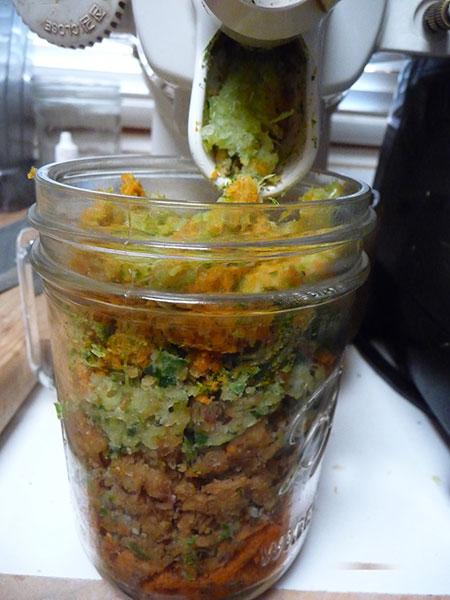
The different types of juicers can also be categorized into juicers that eject the pulp and those that do not. In other words, some collect the pulp inside of the machine and some squeeze the pulp out into an external container.
If you tend to juice on a regular basis, we recommend purchasing a juicer with pulp ejection.
They are much easier to clean and are better machines for juicing over one quart of fresh juice at a time. The non-pulp extracting juicer types build up pulp that you may have to remove from the internal pulp collection basket in order to keep juicing.
Cleaning Your Juicer
Some people will not juice as often if the juicing appliance is hard to clean. Most juicers, unfortunately require regular cleaning that may require 5 minutes of your time.
Most manufacturers advise against washing machine parts in the dishwasher as the hot water may ruin them and effect the operation of the machine long term.
We have discovered over the years that your juicers do not necessarily need to be cleaned immediately if you are using them all day long. This would be the case when juice fasting for many days in a row or just doing a simple juice cleanse.
Often times, if you run a quart or so of water through your machine after juicing it will help to wash out material that will make it easier to clean if you don't wash it right away.
At the end of the day you should clean your juicer so that it is ready to use the next morning.
Some models have more removable parts than others, so you will have to take this into consideration when making the decision on the best juicer to buy for your needs.
They all usually come with their own unique brush or brushes for scrubbing different parts and equipment.
Warranty's
Most high quality juicers come with a 5 -10 year warranty and will replace any needed or malfunctioning parts for free.
Best Juicers on the Market for Juicing Greens
The twin gear Samson Super Juicer or the Green Star are the top choices for this purpose. The Green Star juicer is, in our opinion, the best juicer for juicing green leafy vegetables as well as wheatgrass.
This is because of the way it presses the juice via a twin gear rotating process that slowly squeezes out the juice without heating or oxidizing it in any way. The pulp that remains also seems to be incredibly dry which is a good sign you got the most juice as possible.
When juicing greens through other juicers we recommend bunching them in with other vegetables like cucumber or celery rather than alone.
This seems to help break down the plant fibers and extract more of the nutrient chlorophyll-rich liquid.
Manual and Electric Wheatgrass Juicers
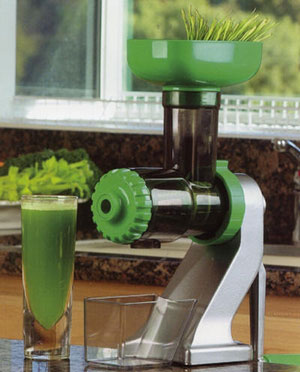
There are many manual hand crank juicing machines to consider for those interesting in juicing wheatgrass exclusively. They are usually under $100, a much more affordable price than other types of juicers.
Manual wheatgrass juicers are also wonderful at juicing, of course wheatgrass, but are also able to press other green plant varieties.
There are several electric wheatgrass juicer models on the market for those of you who are serious about wheatgrass juicing or are making it in large quantities.
Fore more on wheatgrass juicer visit our store.
Types of Juicers for Wheatgrass
- Z-Star Wheatgrass Juicer - Manual
- Lexen Manual Wheatgrass Juicer, Healthy Juicer
- Miracle Electric Wheat Grass Juicer
- Wheateena Marvel Red Label -Electric
- Samson Advanced 6 in 1 Electric Wheatgrass Juicer
- Tornado Stainless Steel Manual Juicer
How to Juice Without a Juicer
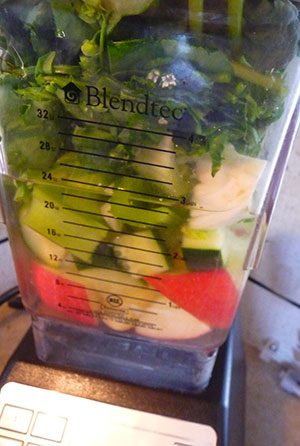
It is also possible to juice with a blender, rather than a juicer, by completely pureeing your juicing material with a little bit of water if necessary.
After this is achieved, either by using a high speed blender or NutriBullet, you can pour the liquid puree through some kind of straining device. We like to use a fine mesh nut milk bag to completely separate the juice from the pulp.
This method is quite effective at extracting most of the water content out of your produce.
So, no excuses... if you don't have a juicer or can't currently afford one, now you have another option!
Shop Related Products (About Affiliates & Amazon Associate Paid Links)
Affiliate Disclaimer: This section contains affiliate product links. If you make a purchase through our recommended links, we receive a small commission at no additional cost to you. Thanks for the support.
